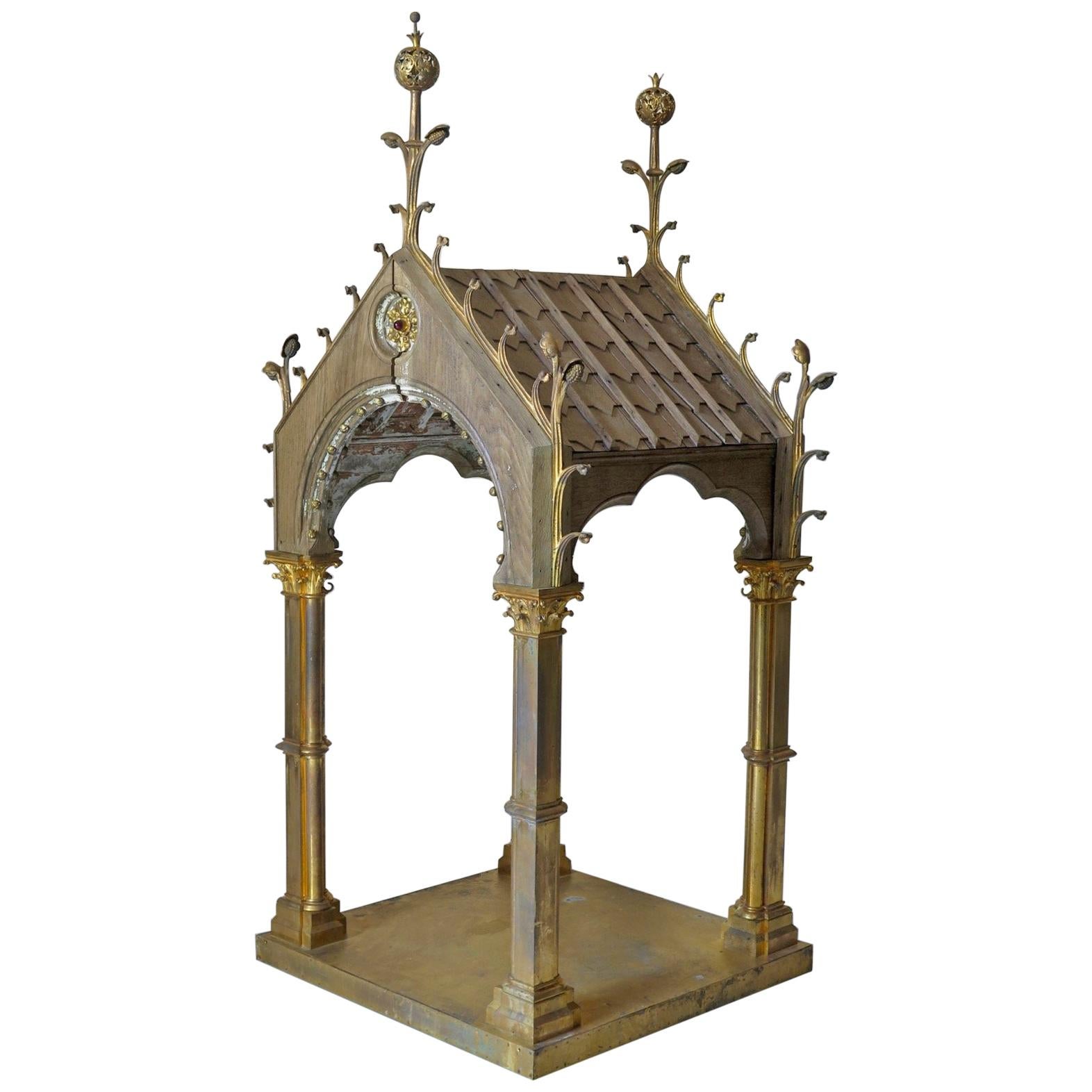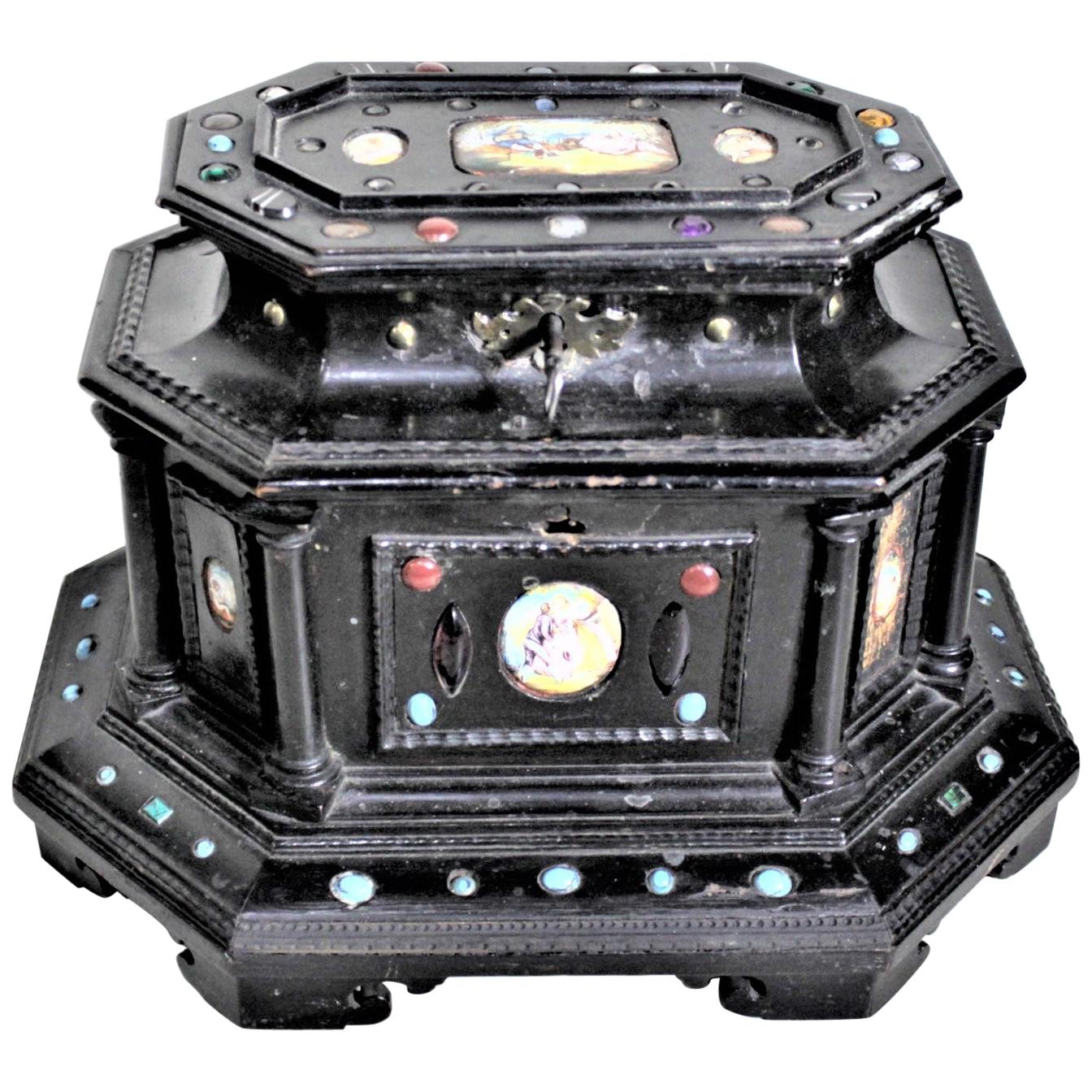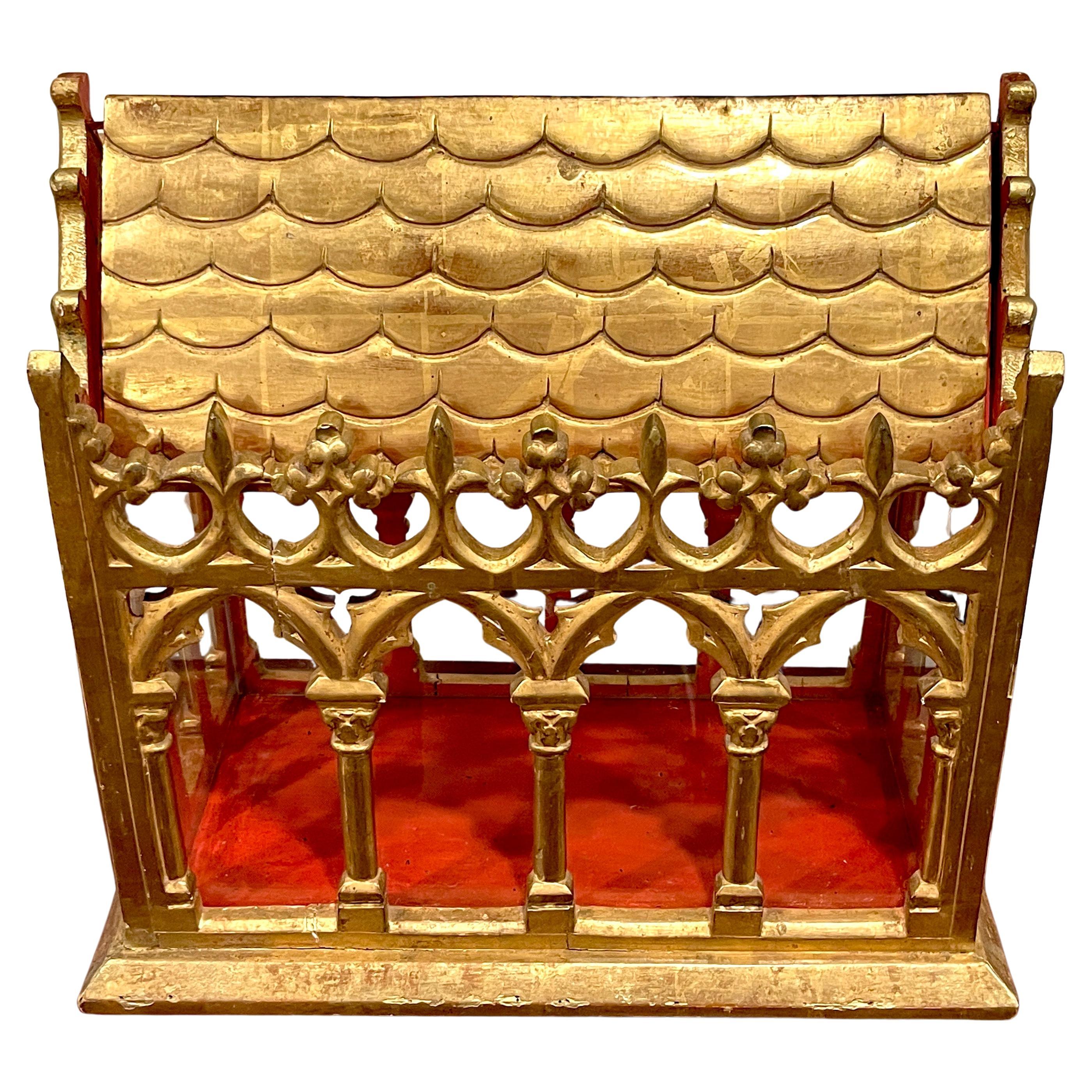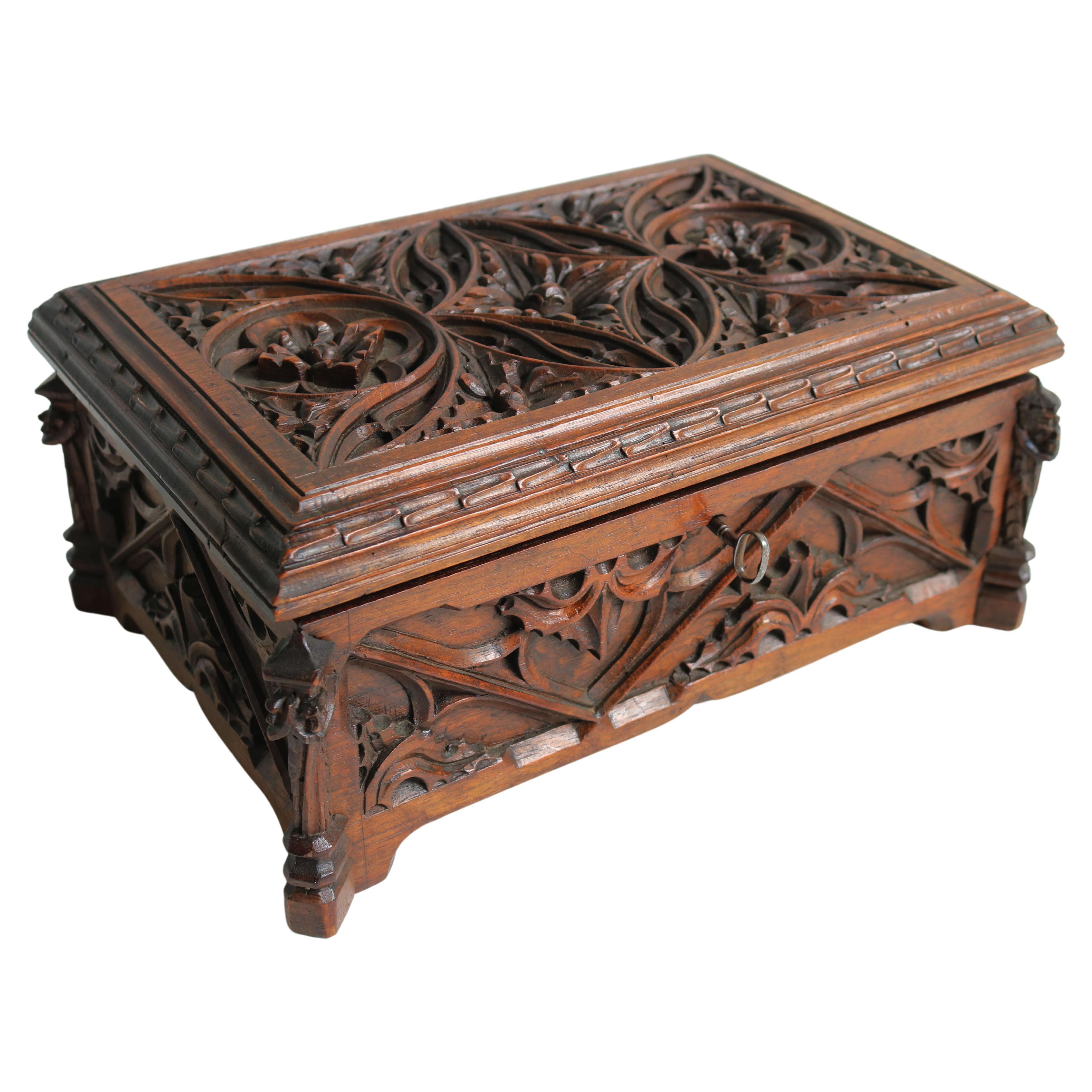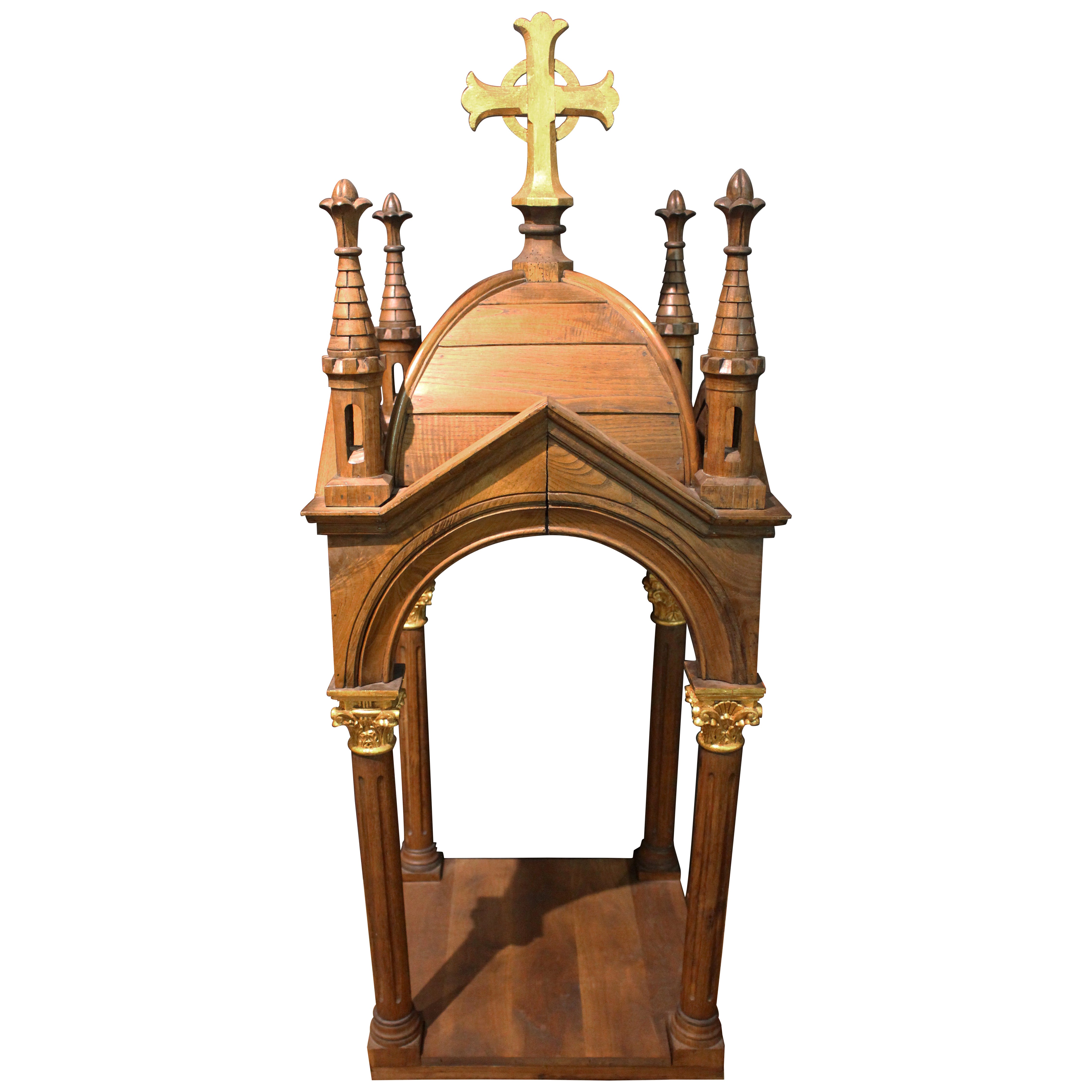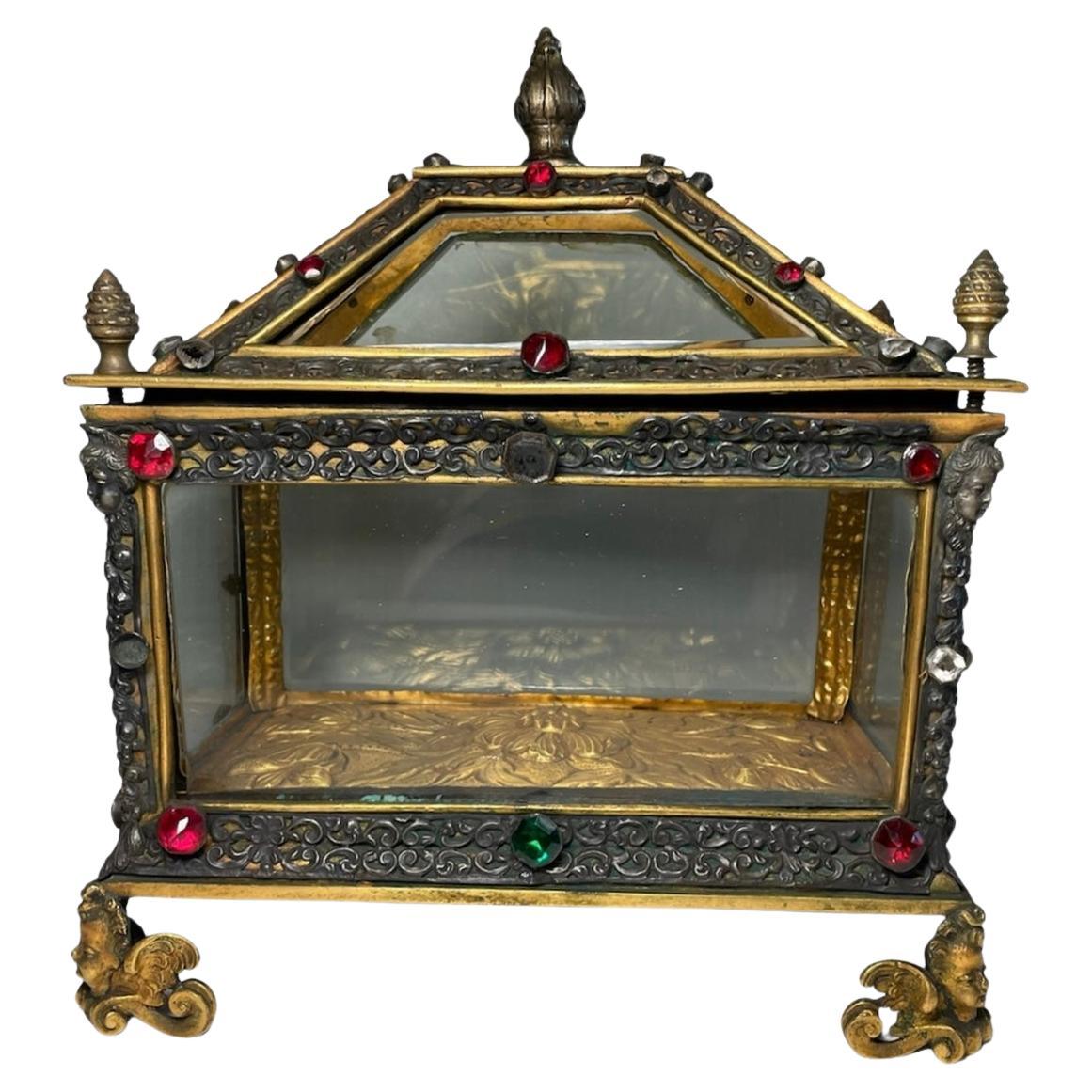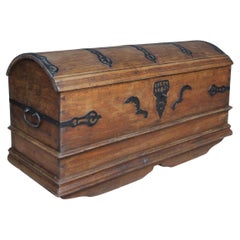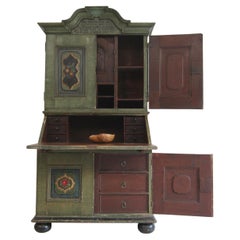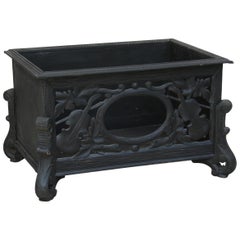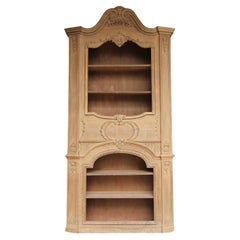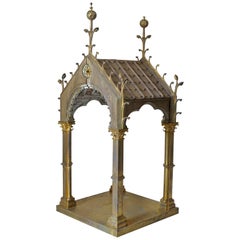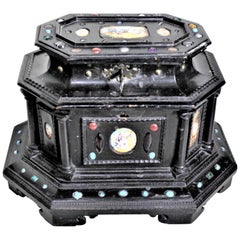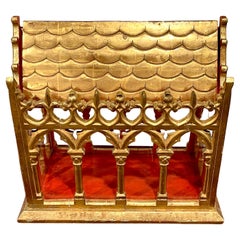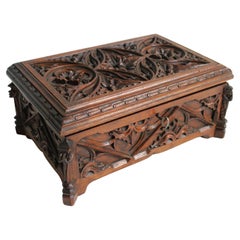Items Similar to Late 19th Century Gothic Revival Reliquary Casket
Want more images or videos?
Request additional images or videos from the seller
1 of 21
Late 19th Century Gothic Revival Reliquary Casket
$3,627.77
£2,698.69
€3,025.21
CA$4,967.66
A$5,523.36
CHF 2,883.99
MX$67,232.70
NOK 36,798.48
SEK 34,478.42
DKK 23,029.25
Shipping
Retrieving quote...The 1stDibs Promise:
Authenticity Guarantee,
Money-Back Guarantee,
24-Hour Cancellation
About the Item
A Gothic Revival reliquary. Circa late 19th / early 20th century. Made of solid oak with fine carving.
Reliquaries have been used to store relics since the Middle Ages. In sacred architecture they are often located behind the main altar in the chancel. In addition to classical, often church-like caskets, anthropomorphic, so-called "speaking" reliquaries were also made, which already inform the viewer about their contents through their own design. Mostly they were made of precious metals and decorated with rich sculptural ornaments or precious stones. One of the most famous examples of reliquaries is the Epiphany shrine of Nicholas of Verdun from the late 12th or early 13th century in Cologne Cathedral.
The reliquary offered here has an architectural structure with a rectangular ground plan. The three-sided glazed box with a dormer roof rests on a plinth.
A total of 8 columns of Corinthian order form the arcades which are crowned on both long sides by 3 lancets each and enclose the lancet windows on the 3 visible sides. A small lockable door is located in the centre of the back.
The roof is coloured and carved with diamond-shaped tiles with crosses. The roof prince is crowned by cross-leaf decoration set in gold.
Both the plinth zone all around and the tympana of the lashings are decorated with coloured semicircular glass stones. One stone on the back at the base is missing.
Other usual iconographic elements in the form of representations of saints etc. have been omitted, thus placing the focus on the architectural structure in the Gothic style.
Remains on the back show that the reliquary was originally at least partially gilded with gold leaf.
The interior still has an old turquoise/blue setting.
Partly newly glazed.
Dimensions:
76 cm high / 29.9 inch high,
77 cm wide / 30.3 inch wide,
46 cm deep / 18.1 inch deep.
Information about the origin and the original contents are unfortunately not known.
- Dimensions:Height: 29.93 in (76 cm)Width: 30.32 in (77 cm)Depth: 18.12 in (46 cm)
- Style:Gothic Revival (Of the Period)
- Materials and Techniques:
- Place of Origin:
- Period:
- Date of Manufacture:Unknown
- Condition:Repaired. Replacements made: Glass panes has been replaced. Wear consistent with age and use.
- Seller Location:Dusseldorf, DE
- Reference Number:1stDibs: LU3999130652852
About the Seller
5.0
Vetted Professional Seller
Every seller passes strict standards for authenticity and reliability
Established in 1975
1stDibs seller since 2018
75 sales on 1stDibs
Typical response time: 3 hours
- ShippingRetrieving quote...Shipping from: Dusseldorf, Germany
- Return Policy
Authenticity Guarantee
In the unlikely event there’s an issue with an item’s authenticity, contact us within 1 year for a full refund. DetailsMoney-Back Guarantee
If your item is not as described, is damaged in transit, or does not arrive, contact us within 7 days for a full refund. Details24-Hour Cancellation
You have a 24-hour grace period in which to reconsider your purchase, with no questions asked.Vetted Professional Sellers
Our world-class sellers must adhere to strict standards for service and quality, maintaining the integrity of our listings.Price-Match Guarantee
If you find that a seller listed the same item for a lower price elsewhere, we’ll match it.Trusted Global Delivery
Our best-in-class carrier network provides specialized shipping options worldwide, including custom delivery.More From This Seller
View All18th Century German Baroque Chest
Located in Dusseldorf, DE
Original German baroque round-lidded chest from the 18th century. Made of solid oak wood and richly decorated with hand-forged fittings. Monogrammed with ‘BLSG’ and the year 1798.
T...
Category
Antique 18th Century German Baroque Blanket Chests
Materials
Wrought Iron
18th Century Original Painted Baroque Secretary
Located in Dusseldorf, DE
German provincial Baroque secretary à deux corps from the 2nd half of the 18th century. Solid oak with original green coloured painting.
A very rare piece of authentic furniture who...
Category
Antique Late 18th Century German Baroque Secretaires
Materials
Oak
Antique Chest in Black, Germany
Located in Dusseldorf, DE
Antique German open chest/box in black from approximate 1860 presumably for the storage of music notes.
Dimensions: 44 cm high, 71 cm wide, 51 cm deep.
Category
Antique 19th Century German Blanket Chests
Materials
Wood, Oak
Late 19th Century Louis XV Style Trumeau Shelf
Located in Dusseldorf, DE
Rare trumeau shelf in Louis XV style. Late 19th century and later. Solid oak, skilfully carved with ornamental, floral and rocaille motifs.
Trumeau was originally just the name for ...
Category
Antique Late 19th Century French Louis XV Bookcases
Materials
Oak, Plywood
Late 18th Century Painted Folk Art Cabinet
Located in Dusseldorf, DE
A late 18th century original painted folk-art cabinet from Southern Germany/Austria.
An authentic piece of furniture with exceptionally beautiful patina. The original painting is al...
Category
Antique Late 18th Century German Folk Art Cabinets
Materials
Pine
Large French Breton lit-clos Cabinet from 1817
Located in Dusseldorf, DE
A large Breton cabinet, former ‘lit-clos’. Dated 1817, rebuilt at the end of the 19th/beginning of the 20th century. Made from solid oak.
This extraordinary piece of furniture was ...
Category
Antique Early 19th Century French French Provincial Cabinets
Materials
Oak
You May Also Like
French Gothic Revival Religious Artifact, circa 1880s
Located in Isle Sur La Sorgue, Vaucluse
Catholic artifact, originally made to house a statue. Made of oak, clad in copper The Gothic style decor on the roof is made of brass.
Category
Antique Late 19th Century French Gothic Revival Religious Items
Materials
Brass, Copper
Antique Two Tiered Jewelry Casket or Box with Inaid Stones & Porcelain Panels
Located in Hamilton, Ontario
This antique and elaborate wooden jewelry casket or box is unsigned, but presumed to have been made in Austria in approximately 1880 in a Gothic Revival style. The box has two tiers ...
Category
Antique Late 19th Century Austrian Gothic Revival Jewelry Boxes
Materials
Stone
19th Century French Gothic Cathedral Giltwood & Glass Reliquary / Vitrine
Located in West Palm Beach, FL
19th Century French gothic cathedral giltwood & glass reliquary / vitrine
France, mid-19th century.
A reliquary is a container for the display an...
Category
Mid-20th Century French Gothic Revival Religious Items
Materials
Glass, Giltwood
$3,080 Sale Price
46% Off
Rare Antique French 19th Century Gothic Revival Neo-Gothic Jewelry Box Church
Located in Ijzendijke, NL
Exquisite & rare ! This French 19th century Gothic Revival Jewelry box in carved walnut.
Amazing craftsmanship and richly decorated with Gothic style carvings on all sides.
Each ...
Category
Antique Late 19th Century French Gothic Revival Jewelry Boxes
Materials
Velvet, Walnut
Circa 1880 French Gothic Style Baldachin or Statuary Niche
Located in Chapel Hill, NC
Circa 1880 French Gothic style Baldachin or Statuary Niche. Derived from canopies for processions, the term has come to signify all such coverings, most famously the Bernini high alt...
Category
Antique 1880s French Gothic Revival Religious Items
Materials
Gold Leaf
19th Century Bronze Reliquary Casket
Located in Guaynabo, PR
This is a Bronze Reliquary Casket. It depicts a rectangular lidded casket/box shaped as a house with a hip roof and its walls are glasses framed wit...
Category
Antique 19th Century Unknown Renaissance Religious Items
Materials
Bronze
More Ways To Browse
Gilded Items
19th Century German Collectibles
Antique Gothic Door
Antique Cathedral Glass
Gothic German
German Tile
Antique Gothic Window
Antique Reliquary
Oak Leaf Carving
Antique Stone Window
Stone Altar
Door Diamond Glass
Church Box
Gothic Church Doors
Antique and Vintage Gold Ornaments
Gothic Church Items
Crown Glass Window
Hand Reliquary
